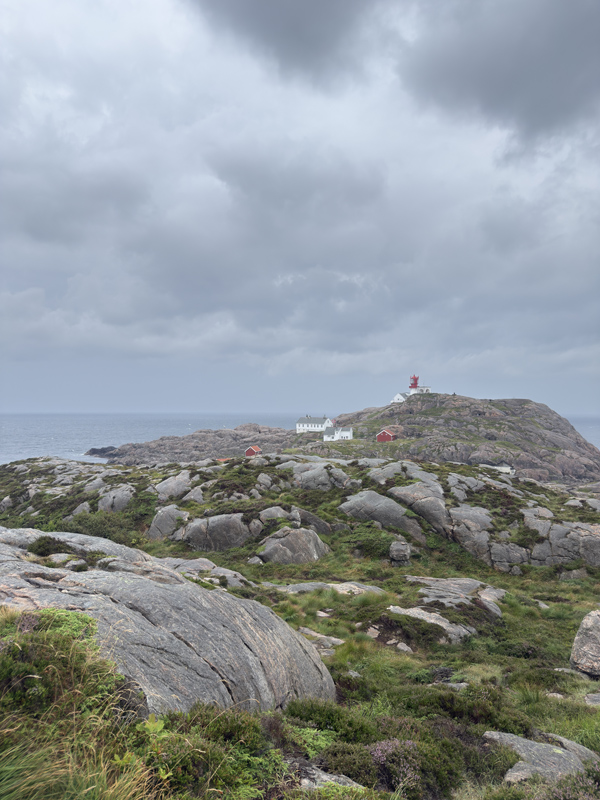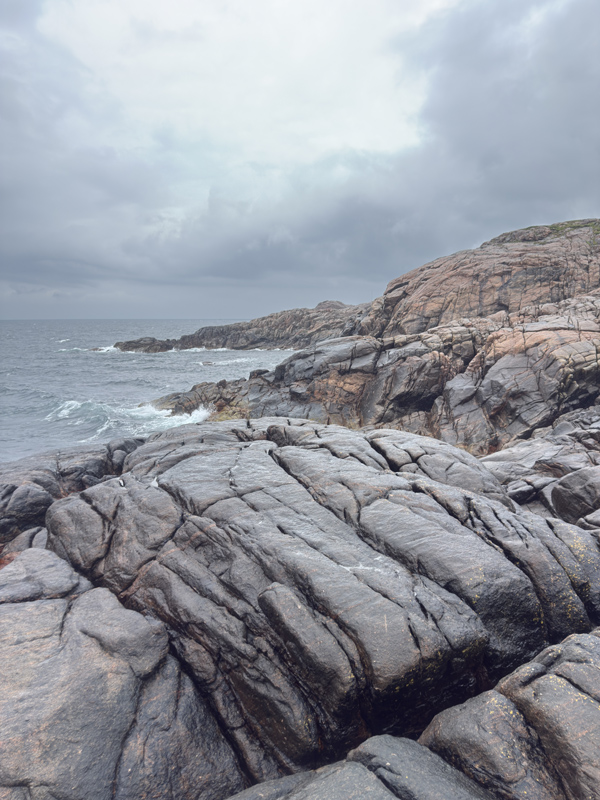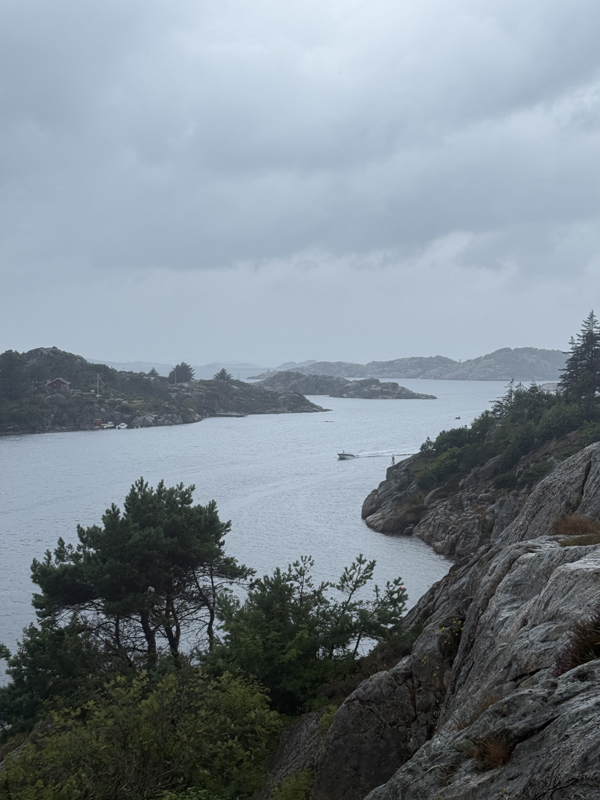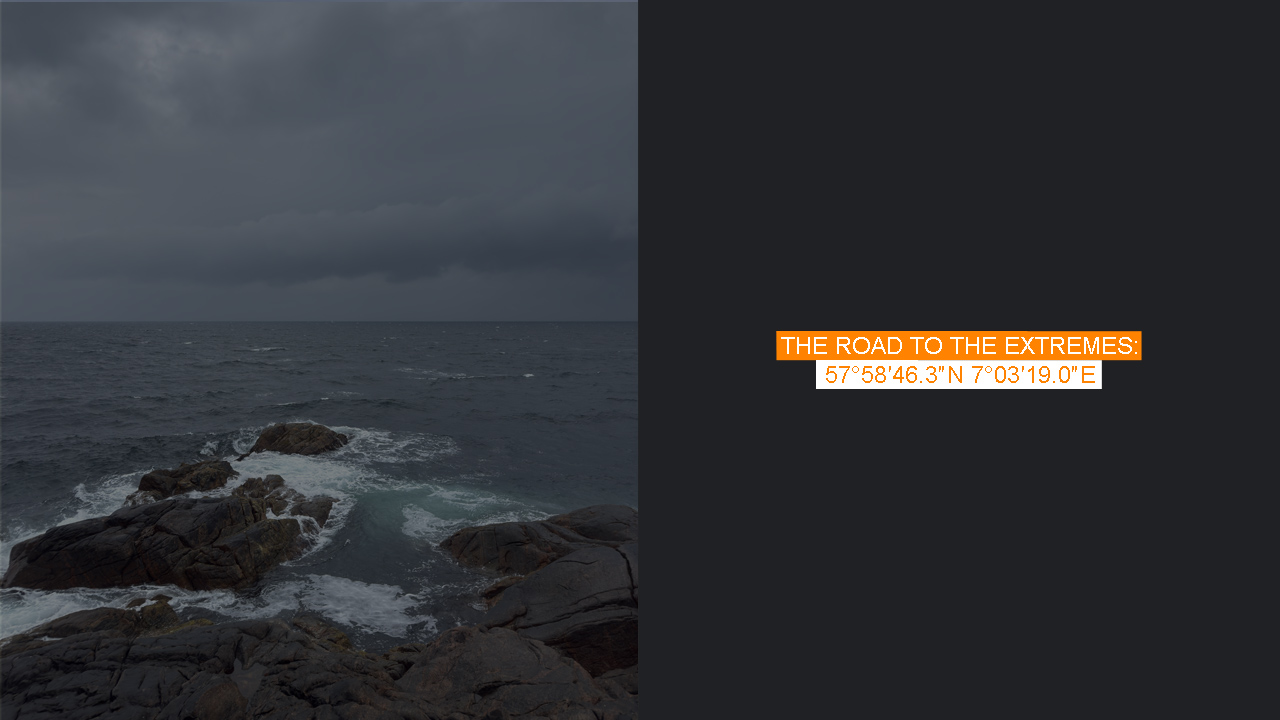Some years had passed since my last visit to Lindesnes. I remembered that evening as something spontaneous, something beautiful: the sun setting on the horizon, the half-hour drive from the main road winding through countless turns until it delivered me to the southernmost lighthouse on the Norwegian mainland. Not only that — Lindesnes is also the oldest lighthouse site in Norway, dating back to 1656.
Back then, I didn’t yet realize how much I would come to love extreme points. The lighthouse was easy to reach by car, and like most visitors I simply accepted it as the southernmost point of mainland Norway. Technically, it isn’t — though it lies nearby — and at the time I hadn’t bothered to find the actual southernmost point.
Storm Approaching
Now, rainy weather was sweeping northeast over the North Sea from the UK. The day before, I had managed to reach Pysen — Norway’s true southernmost point — something that had long felt like a distant dream. It had been a tough day: my legs bruised and cut, my body exhausted. My plan was to stop at Lindesnes before the storm fully arrived, but after such an effort, even small things take time.
The weather was changing fast. Days of sun and warmth were giving way to clouds and endless rain. I woke up beside the river Marna to a grey sky. The night before I had washed my paddleboarding gear, but it was still damp. My camping stuff was dry, at least, though my shirt and shorts had turned completely white with dried salt. That made me laugh — even if it meant hurrying my departure. Caravans were already rolling out as I packed up and hit the road.
I had driven more than a thousand kilometers since leaving home. The distance had gone quickly, but the previous day’s effort weighed on me. I noticed I had to concentrate more than usual to keep my focus on the road. At one point I saw my first police car of the entire trip — surprising, given how far I’d come. The road to Lindesnes, twisting endlessly through hills, would be every motorcyclist’s dream.
The closer I got, the harder the rain fell. By the time I reached the parking lot, it was pouring. The forecast promised nothing but worsening conditions: stronger winds, heavier rain, and even thunder. It was hard to believe it could get any worse.
I sealed my phone and car key in a waterproof case, slipped on my flip-flops, and stepped outside. Within seconds I was soaked through, underwear included. Where Lindesnes had once given me one of my most romantic and peaceful memories, now it was offering the complete opposite — night and day.
Paxstien to the Point
The parking lot was surprisingly busy. Families in rain jackets sprinted toward the lighthouse. I had other business: finding Norway’s southernmost mainland point, which lay east of the lighthouse. An information sign pointed to a set of small trails. I chose the fastest one — Paxstien, leading toward Nesvarden, a cairn on the headland in English. Vamos.
The trail was rocky, wet, and muddy. In shorts and flip-flops, I tried to dodge sticks and sharp grass, but it was a losing battle. Rain and wind whipped at my face, the open sea roaring ahead. To the east lay Skagerrak, to the west the wilder North Sea and Atlantic swells. These dangerous waters were the reason Lindesnes became Norway’s first lighthouse site in the first place. For me today, the real danger was the slick, slippery cliffs.

No surprise — I was the only one heading this way. Everyone else stuck close to the lighthouse. At times the ground swallowed the view, the lighthouse vanishing from sight. Eventually, I reached the tip. Getting to the exact point required small-scale climbing — or rather, descending — choosing carefully when to jump and when not. My flip-flops, surprisingly, gripped well enough as long as they didn’t slide off. This was not a place to slip, fall, or lose a phone.
Slowly, carefully, I made it. And then — the rain stopped. Had nature given me a moment of mercy, a brief photo session without water streaming down my face?
I lingered, checking and double-checking that this was indeed the southernmost point. Clouds raced overhead. Rain was close again, maybe only a kilometer away. At the lighthouse, visitors no doubt believed they were at the southern tip. But they weren’t. I was.
And then the rain returned.
The climb back up was tougher than the descent. From above, the trail wasn’t always clear, and I found myself at dead ends before backtracking. But eventually I made it back to the main path.

The Mainland Debate
I skipped the lighthouse itself — I had already been there once, in perfect conditions. Today was enough. Back in the car, heaters blasting, I thought about a curious detail:
In 2007, a canal called Spangereid opened, cutting across the isthmus just north of Lindesnes. The Norwegian Mapping Authority briefly ruled that Lindesnes was no longer part of the mainland, shifting the southernmost point to Odden, just before the Skjernøyveien bridge.
But in February 2008, they reversed the decision, agreeing that artificial canals don’t change what counts as mainland. After all, the Suez Canal didn’t separate Sinai from Africa, nor did the Panama Canal split Central America. By that logic, Lindesnes officially remained the southernmost point of mainland Norway.
Still, since Odden lay almost on my way north, I decided to visit it too — just in case.
Odden, and the Escape North
The rain never stopped. I drove an hour through storm-soaked roads, feeling sorry for motorcyclists battling the weather. Parking near Odden was the hardest part: most of the archipelago is private, and I had to leave my car several hundred meters away. My clothes had partly dried, only to get drenched again on the short walk.
Odden was stunning — sheer drops into the sea, wild waves slamming against rock. For a moment I stood in awe, until a loud crack of thunder snapped me out of it. Time to run back. Once again, I collapsed into the car, dripping wet but safe.

As I drove north, it became clear my clothes would never dry just from body heat. I found a place to change, finally warming up. My plan to paddleboard to Stora Drammen in Sweden slipped away. The storm itself wasn’t the issue — it was passing elsewhere — but my legs were battered with cuts and bruises, and I was exhausted. I could push through, but I didn’t want to risk infection or worse.
So I changed course, heading north. Ahead lay sun and temperatures close to 30 degrees

